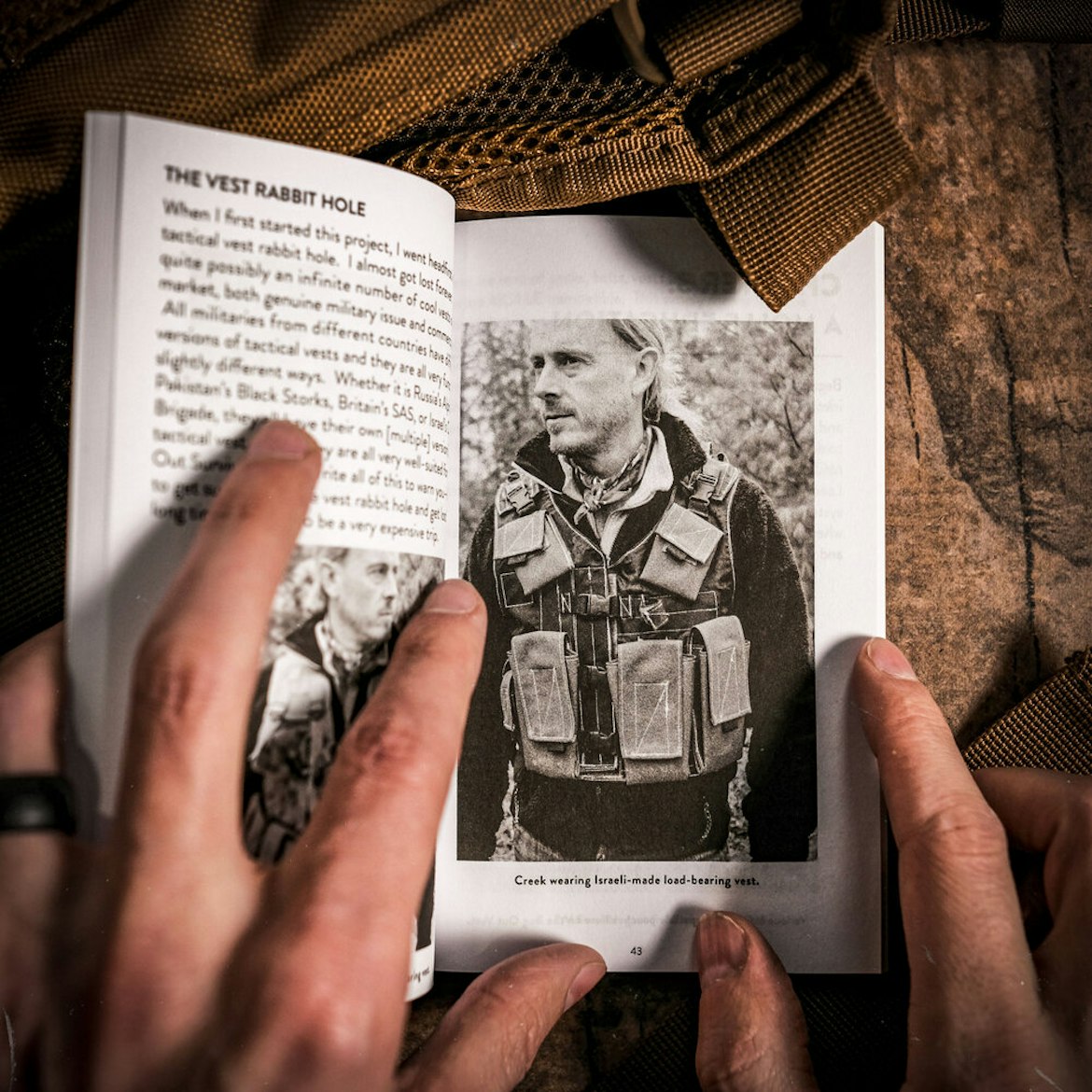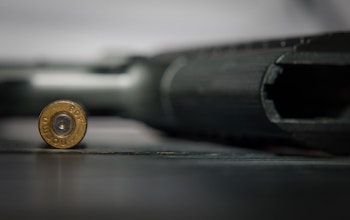What do you do If you have to make a run for it? For most preppers the plan is to grab the bug out bag and head for the door. There are almost as many ideas on a BOB as there are preppers and we all try to figure out how to best set one up. One idea on how to carry survival gear that has been around for almost as long as there has been an Air Force is the survival vest.
I have experimented with survival vests for a long time, but I never would have thought of a Bug Out Vest. One of Creek Stewart’s Pocket Field Guides has got me thinking on that track now. One of the big advantages of a survival vest is that the weight of the gear is spread out and easier to carry and it keeps gear handy while keeping your hands free.
Wrapping my head around a bug out vest took a little work, so I bought a copy of “Pocket Field Guide: the Bug Out Surivival Vest” from Amazon. In the past I viewed the survival vest in much the same way as a small survival kit, in fact I have had a Vietnam era Air Force Survival Vest hanging in my closet for about 25 years now that has served that purpose well. It has carried a basic survival kit with the tools to see to my survival needs and is for unexpected emergencies on day trips and the like, but it may not be the best tool for a bug out situation.
I am rebuilding my bug out equipment plan right now so I decided to explore new ideas. I reread a lot of the material that I have on hand and bought new books to gather new ideas. I found Stewart’s “Build the Perfect Bug Bag” to be a great resource so when I came across this Pocket Field Guide on the vest, it grabbed my attention.
The Pocket Field Guides are a series of short, concisely written guides to specific survival topics. In this volume you get a step-by-step tour through the process of building his bug out vest. The lion share of the 82 pages is devoted to choosing the base vest. I have vests that match some of the ones that he suggests already, including a Dutch molle-style vest that matches the Bergan-style backpack that I am using to build my BOB and a chest rig like the one he shows in the bonus section of the book.
Ideas on vest choices make up the largest part of the book because it is the most complex part of the process. The sections on what goes into the vest is less complex because this little book is about choosing the platform and suggestions on the supplies and equipment that should fill it. Think of the rest of the book as a starting off point.
Each subsequent section gives a brief run-down of items to cover the basic survival areas Shelter, Water, Food, Fire, Frist Aid, Rescue (Signaling) and Tools. When you are building any survival kit you should consider the items in a guide you are using as suggestions and adjust as needed. That being said, the lists in each section are quality products worth considering.
While I have a hard time seeing 3-days supplies on a vest set-up, Stewart makes a compelling argument in this guide. A vest like this would be far and away better than nothing. For me, this vest set-up makes a lot of sense as a second-line kit. In military terms, the Second Line are the basic survival and self-defense tools that are carried so that the soldier is always ready.
For our purposes as preppers, the second line is the first layer of a bug out plan. It is an important tool once you get to your bug out location and must venture away from base camp. A vest like this gives you enough survival gear to unexpectedly be away from base camp for a night or two. It should make it easier to do the work you need to do by keeping your hands free and distributing the weight more evenly about the body.
I am following the guide in building a second line vest kit that will sustain me at a basic level. I bought the Dutch tactical vest from Varusteleka in Finland for the purpose. As an aside, ordering for Varusteleka is an easy and quick process and the prices a fair. The Dutch vest is of MOLLE style and so far, I have had no problem attaching pouches from Condor to it, so I think that most MOLLE style pouches will fit.
One of the nice touches in the Field Guide is a chapter on how to properly use MOLLE. Doing it right will make your equipment more secure. With the variety of pouch styles that are available now, a MOLLE style vest makes a lot of sense. The book does not take defensive weapons into account, so you don’t get suggestions in that area, but you get examples of other pouches to use for various kits. I am thinking that a MOLLE vest is the way to go. This way, you can customize the vest in a way that works for you.
The kit suggested in this book fits my BOB plan very well. Creek Stewart’s “Build the Perfect Bug Out Bag” has been one of the guides that I am using for my new BOB, which represents the third line of my preparedness bug out plan. When I discovered this guide the description made it look like it was a good guide to building a general second line kit. I am pleased to say that I was right.
When I get the new kit finished, I will post a video to show you how it comes out. Until then, if a survival/bug out vest sounds like a good plan, the “Pocket Field Guide: The Bug Out Survival Vest” is a place to start.










Great